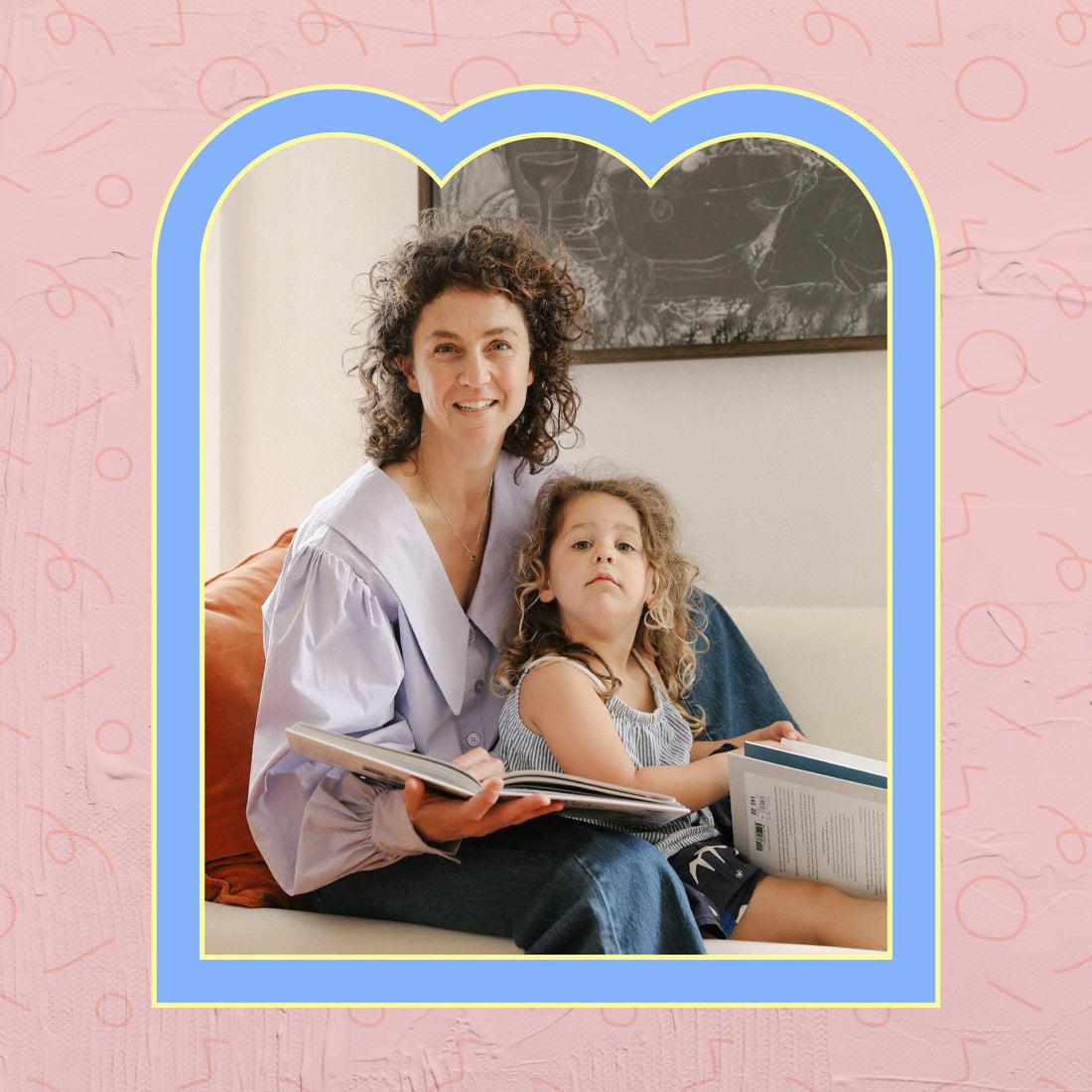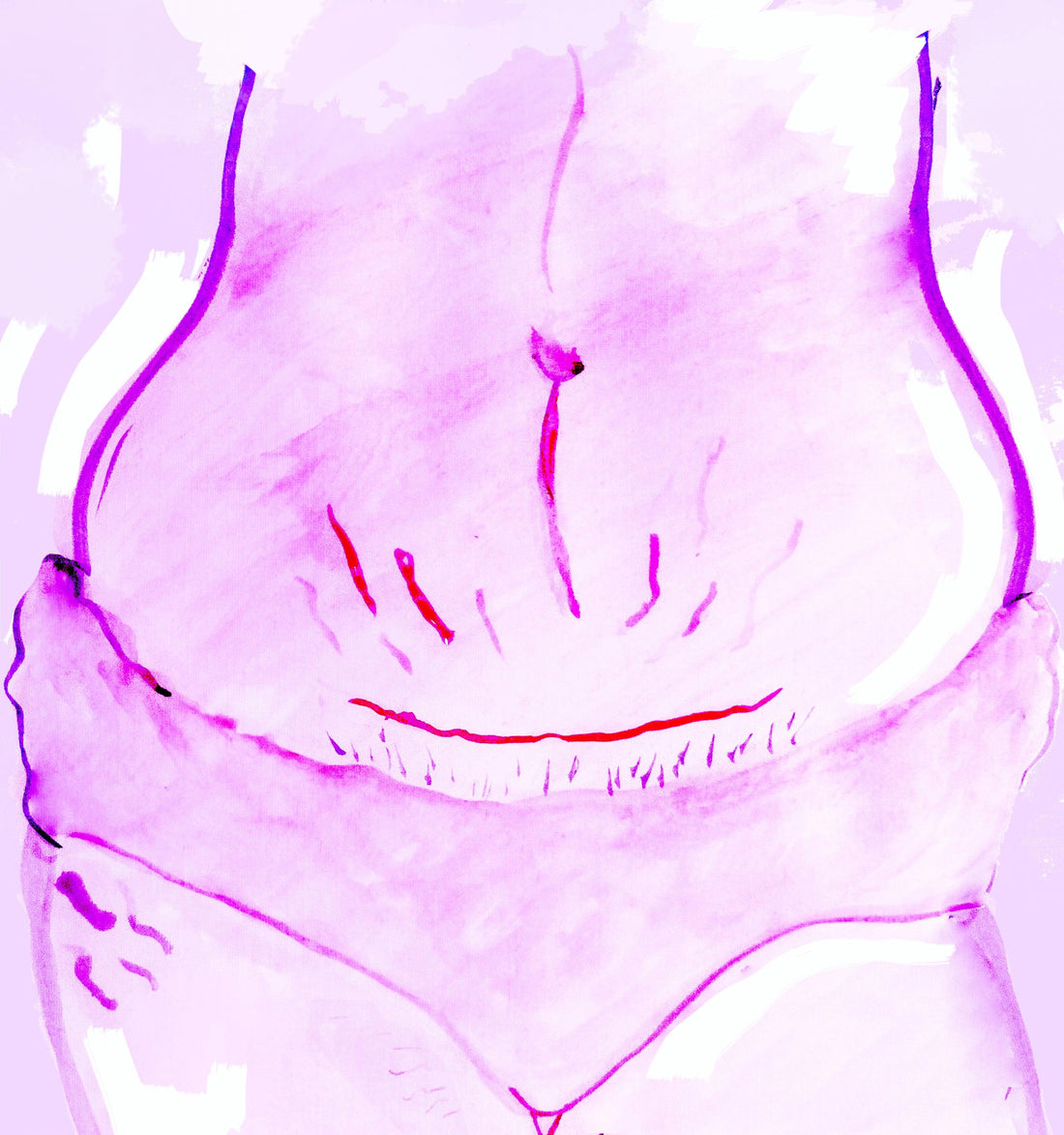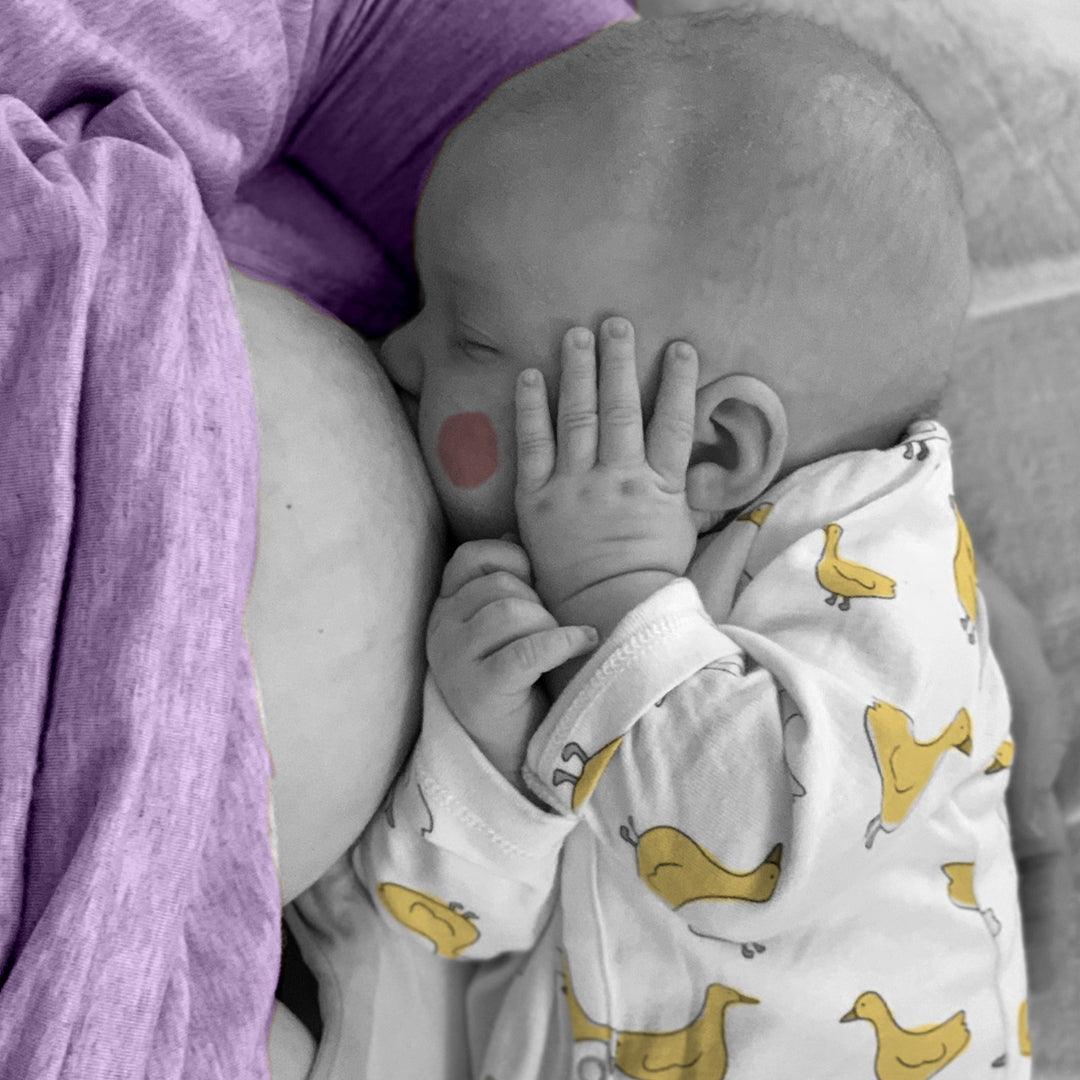How Rowie Cooke prepared for her successful VBAC.
A wise yoga teacher once said, "you can't go over it, you can't go under it, you have to move through it". While lyrics from a children’s song, I think these words echo hard truths when talking about birth.
A potent dose of medicine, birth is the transit into the void of motherhood. For the lucky few, we are granted our dream birth with our first, but for many of us, it takes the experience and unpacking of our first birth to have the courage to process, consider and manifest what a supported birth looks like. For some that’s having a vaginal birth after a Caesarean birth. VBAC stands for Vaginal Birth After Caesarean. In the recent Mother and Babies report, 37% of all women giving birth in Australia had their child via Caesarean section. The same report shared that the VBAC rate was only 13%.
The Royal Womens Hospital states on their online resource that if a previous caesarean was uncomplicated and you decide to plan for a vaginal birth, then you have a 60–80% chance of achieving one. So if you're thinking of birthing differently next time around you'll find that most hospitals, obs and midwives will allow this to be an option.
There are many reasons why a mother would consider a VBAC a second time round. For starters, not having to undergo major abdominal surgery, the likelihood of skin-to-skin immediately after birth is much higher, less time in the hospital plus a much speedier recovery. And of course, emotional healing.
Hannah Parker, mother to Peggy (3) quotes, “Honestly, for me, it’s the practicality of things. If I could aim for a quicker physical recovery and even the ability to drive, I reckon I could deal with the fourth trimester with two kids much better”.
Alex Grivis, mother to Leon (7 months) quotes, “My scar is a symbol of resilience, after overcoming a long recovery, I feel an overwhelming sense of confidence in myself to attempt a VBAC next time. Entering my last birth, I had doubts. But now I have done the work — I trust my body."
So can anyone have a VBAC? There are some reasons you may not be the right candidate for VBAC and of course, you’d have to seek professional help from your health provider. Still, some reasons include: if you had a caesarean within the previous 18 months, being older than 40 years of age and placenta previa (when the placenta partially or covers the cervix).
Postpartum doula Rowie Cooke, mother to Sonny (4.5) and Rua (2), living in Coburg, Naarm was determined to birth on her own terms after a traumatic first labour and birth where she was separated from her new baby and partner. Here’s the clincher, she was successful. Here she details how she prepared during pregnancy to have her VBAC birth.
What was your first birth like, and how did it affect your birthing preference for your second?
“I went into spontaneous labour the day after my ‘due date’, and I laboured actively at home with the support of my partner Jake for around 12 hours. Sonny was posterior so thhe back pain I was experiencing during labour was extremely intense and I couldn’t draw upon any of the ‘tools’ during labour like my birthing ball, bath and movement. We made our way to the hospital around midnight and I was relieved to learn I was 7cm dilated. About an hour after our arrival, a routine monitoring check registered some abnormal heart activity for Sonny so I was quickly instructed to get onto the bed for close monitoring. Sonny’s statistics were not looking good, and we were rushed into the theatre for an emergency C-Section. I was separated from my baby and partner for hours. Then 2 days later, I endured 10 days of separation whilst she stayed in the special care nursery and we returned home without her. Becoming a mother was not at all as I had envisaged and I was a shell of myself — broken both physically and mentally."
What health care providers did you choose? Did you shop around before landing on the ones you felt aligned with?
“Absolutely. I knew the biggest factor in having a successful physiological vaginal birth was having continuity of care by not only a midwife but by a well curated birth team whom I felt confident and safe with. I was originally planning on birthing at a public hospital with a private midwife, a doula and my partner, but as the reality of Covid placed increasing restrictions on who I was able to have with me, I became more and more interested in homebirth. I felt safest at home and so knew my body had the best chance of birthing naturally there. It was the best decision I ever made. At 28 weeks I set about the task of finding my support team who aligned with my wishes. This proved to be more difficult than I thought, different private midwife practices have different rules and protocols around supporting VBACs, so I had to do my research to find midwives who were 100% supportive of my wishes for a HBAC (Home Birth After Caesarean). I met with two different midwives through this practice and chose the one that best aligned with me. If you speak with any homebirth midwives you will realise it is common practice for birthing people to shop around and meet with multiple care providers to find someone who you feel aligned and safe with."
Private midwives
“My private midwives provided physical check-ups throughout my pregnancy for me and my baby. We discussed my wishes for the birth and spent lots of time getting to know one another in the lead up to the birth. They would come to my house and have cups of tea or I would sometimes go to their clinic. There was equal importance placed on my mental health as well as physical health throughout my pregnancy. Midwives working in this space, witnessing undisturbed physiological birth often, have confidence in the body’s ability to birth and their care reflects this trust in a woman’s body and her baby. A lot of their role was to reassure me that things were exactly as they should be and to keep my mindset positive and grounded.”
Birth doula
“My birth doula worked with me in the weeks leading to the birth to work through my fears, to meet me where I was at on my birth journey and to hold space for me while we unpacked my first birth experience. She used embodiment practices (breath, movement, touch, sound) to help me to reconnect to my own body, to build confidence and trust in my own body’s wisdom, and to make a birth map for all scenarios that may play out within the birth space once labour began, including transfer to hospital. We did not brush over the chances of being transferred to hospital, or the decisions I would have to make when we got there. I was able to plan out exactly what I did want to happen should I end up having another c-section.”
Internal Pelvic Release work by an Holistic Bodyworker
“In this practice, internal pelvic tension is released in the connective tissue (ligaments and fascia). It is said we hold a lot of lifelong trauma and tension in our pelvis. Releasing this tension cultivated balance within my pelvis and womb, to prepare and soften the vaginal tissues and all the surrounding pelvic structures so the second phase of labour (the pushing phase) would proceed with ease. The aim of this type of work is to prevent or minimise trauma to a mother’s birth canal tissues and to the baby. I also worked on some pelvic mapping with my practitioner so that I could understand the dimensions of the bony structures of my pelvis, purely to put my mind at rest that there was plenty of ‘space’ for my baby to descend through and be born. This was a mental barrier I had to overcome after the extreme pain in my coccyx after my first experience of labour and birth.”
Somatic Psychotherapist
“Birth is a lot about your mental state. I worked with a somatic therapist to deal with the birth trauma I experienced from my first birth, reframing my perception of this experience and to build confidence in my own body being able to birth again. I came up with a mantra ‘that was then, this is now’. Every baby is different, and every birth story is different. I saw her weekly in the lead up to birth to explore where I was holding and carrying this trauma in my body and we worked together to move these blockages and ready myself for birth.”
Chiropractor
“A few visits to a chiropractor in my third trimester further aligned my pelvis, hips and whole body, to help me manage hip pain I was experiencing and to make sure my body was aligned in preparation for birth. I wanted to make sure that any tension and unevenness that could possibly make my baby’s descent through the birth canal more difficult was resolved, and that there was plenty of mobility and flexibility in my hips and pelvis for birth. Chiropractic adjustments also helped to balance my nervous system by aligning my spine, pelvis and cranial-dural system.”
Acupuncturist
“I saw my Traditional Chinese Medicine acupuncturist weekly from 36 weeks to soften my cervix in preparation for labour and birth and to assist with relieving third trimester body aches and pains. This included pregnancy body massage which also helped to relieve tension. I found the time spent with my acupuncturist helpful in preparing my body and mind for labour and birth and was a chance to slow down and tune in to my body and connect with my baby.”
“Together with my partner, these professionals all helped me achieve the VBAC I so desperately wanted. Every single one of them believed that my body and my baby had the wisdom to be able to birth naturally. Surrounding myself with professionals such as this throughout pregnancy meant that I knew I had done everything I possibly could to prepare myself for the physical and mental demands of birth, and that no matter how it unfolded on the ’birthing day’ I would have no regrets thinking about what else I could have done to prepare myself.”
And what were the costs all up to make this happen?
“The monetary cost of my VBAC totalled approximately $16,800. I had to do so much of ‘the work’ outside the current maternal healthcare system and realised what an incredibly privileged position I am in to be able to afford this. As research continues to show the factors in maternity care that reduce birth trauma and caesarean rates, I hope that continuity of care is available for all women. Whether through private or public systems, midwifery or obstetrics-led care, we should all leave birth feeling empowered and like we can conquer the world.”
Being a homebirth, did you have to learn more about unmediacted ways to deal with the pain of labour?
“Yes I did. I went to birth classes that used breathwork and visualisation to manage pain (there are many around Radiant Birth, Calm Birth, She Births, Hypnobirth, Australian Birth Stories Birth Class and Core and Floor Restore. I spent my first birth trying to escape the pain, but as Rhea Dhemsey quotes ‘birth isn’t supposed to be comfortable!’ So I went into my VBAC thinking of the pain as functional discomfort rather than that there was something wrong and that I needed to escape it. After feeling so robbed of the experience of a baby being born through my vagina, I relished every minute of it. I used movement, breath, a hot shower and made low, long groaning noises with each contraction to keep my jaw loose. Knowing that I had a house full of people who fully supported me and believed in me made all the difference.”
Did you receive pushback from immediate family members on your choice to do things differently and how did you overcome this hurdle?
“I did. Out of all of my family and my partner’s family I could count on one hand the number of people who wholeheartedly supported my decision to have a home birth. Even Jake was unsure at the beginning. But as he went on the journey with me, he quickly converted. And initially it was extremely hard and terrifying to go against what my ‘tribe’ or ‘village’ thought was in my best interests. But this is what my first birth taught me, 'no-one else is responsible for my birth and my baby'. I had to find my voice to speak up for what I wanted and I can guarantee you, while of course our families had our best interests at heart – they had not done the amount of research I had or understood the state of the current maternal health system. I worked with my therapists around it not being my job to convince them otherwise, and I just had to put my blinkers on a little bit. Unfortunately, birth culture in Australia is very heavily medicalised and if you go outside of the system, you are seen as some kind of renegade. But knowing how I felt after my first birth – like a shell of myself, broken both physically and mentally – as compared to my VBAC, where I felt so triumphant and powerful having pushed my baby out of my own body, I am so glad I made the choices I did for all of us.”
How did you prepare mentally for the possibility of another caesarean?
“While I spent the majority of my time with my birth doula visualising my homebirth, it was important for us to go through the reality of possibly being transferred to hospital, and also the possibility of another caesarean. In fact, I knew that if I ended up in hospital for whatever reason, that I would likely end up with another caesarean as there is no way that my body could relax and open in that environment considering how triggering it would be for me. There are many things that can lead to a transfer to hospital during labour so it was a real consideration we had to make. We discussed EVERY possible reason and scenario at length and made a small map on a piece of A4 paper about what this would mean for Jake and I and the options we would be faced with each step of the way. We noted my wishes for each scenario that Jake could have with him to advocate for me should we end up in hospital. Thankfully we didn’t end up there – but there was talk multiple times throughout my labour about going into the hospital and it took a lot of mental energy to stay in my body and continue to labour undisturbed at home. You never really know the path that labour and birth are going to take you, so it’s important to consider all roads - even the ones you don’t necessarily intend to go down.”
We know that birth isn’t just physical. Can you tell us how you emotionally unpacked and worked through things during your pregnancy?
“As well as all the inner work I did 1:1 with my birth doula, somatic psychotherapist and midwives to process my first birth and inner beliefs I held as a result of that experience, at any spare moment during my pregnancy, I was curled up (always lying on my left side for optimal baby positioning), with a book about normal physiological birth (see extensive list below). I was (and still am) totally addicted to birth stories and understanding the history behind our current maternity models of care. I listened to endless podcasts while driving or walking and I did a lot of journaling about whatever was on my mind in the evenings – I knew that any fears I harboured or judgements I had about myself would come up during labour if I didn’t acknowledge them and move through them. Pam England’s ‘Birthing from Within’ has a lot of activities you can do with your birthing partner to give voice to your fears to prepare you both for labour. I did EFT tapping when I was in the shower with mantras like “My body is made to birth” “My baby knows exactly what to do” “I trust my body and my baby” to remind myself daily of the pure beauty, and extraordinary everydayness of birth. Women all over the world birth safely at home, and have for eternity, and I wanted to stay connected to this divine feminine energy, knowledge and power in the lead up to my VBAC/HBAC.”
Advice to people who are preparing for a VBAC (resources, podcasts).
“Decide what you want and do everything in your power to get it. There will be many people who you meet along the way who will put doubts in your head for whatever reason – if this happens then they are not the right healthcare provider or support person for you – keep looking until you find yourself with a team of professionals who support your VBAC. Hazel Keedle, a VBAC researcher, likens this to having an elite sportsperson whose coach believes they are going to fall over during their event - this simply would not happen. Continuity of care with a health care provider or doula who believes in you and that you feel connected with is so important. As is choosing a place to birth where you feel safest, so you can keep your head out of the way and let your body do what it was designed to do. I also want to add that while I did all this work with outside professionals to get my head in the right space, this is not to say that this is a 'must do' list of processes you need to go through in order to have the VBAC of your dreams. Yes, labour and birth will push you to your edges - it is after all childbirth - but there is nothing to say that you can't have a VBAC through your chosen birth place.
While some of these are ‘birth resources’, after all it is like preparing for any birth in general, there are a few that are specific to VBACs.
Books
- Ina May Gaskin Guide to Childbirth
- Jane Harwicke Collings Ten Moons
- Rachel Reed Reclaiming Birth as a Rite of Passage and Physiology of Birth ecourse
- Rhea Dhempsey Beyond the Birth Plan
- Gabrielle Nancarrow The Birth Space
Podcasts
Hazel Keedle is a renowned VBAC researcher based out of the University of Sydney, listening to any of her podcast episodes will be extremely informative and empowering. She has also written many research papers which you can find on her website, as well as links to other podcasts she has done. She also has a book Birth After Caesarean: Your journey to a better birth experience is being released in September this year.
- The Midwives’ Cauldron Season 3 Ep 13. Talking all things VBAC
- VBAC Birth Stories Season 1 Ep 7. VBAC Matters
Films





















